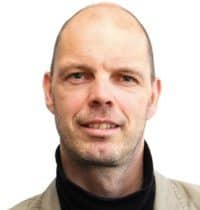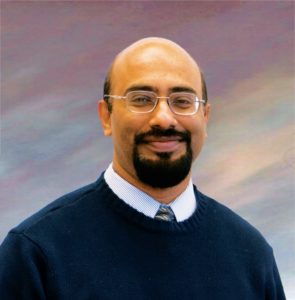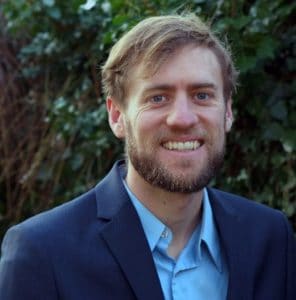
The IEA PVPS Task 13 has just released a new report entitled: Bifacial Photovoltaic Modules and Systems: Experience and Results from International Research and Pilot Applications. This report, with contributions from over forty contributing authors, provides an overview of bifacial PV technology, its benefits and challenges, as well as regional descriptions of R&D being done to better understand this technology.
Program :
- Overview of the new report
by its lead authors : Joshua S. Stein and Christian Reise - Physics and Performance Limits of Bifacial Photovoltaics: A Global Perspective
by Prof. Muhammad Ashraf Alam, Purdue University - Large-scale Bifacial PV Testing in the Nordics for Model Validation
by Nicholas Riedel-Lyngskær, PhD Candidate, Technical University of Denmark
Description :
Bifacial photovoltaic cells, modules, and systems are rapidly overtaking the market share of monofacial PV technologies. This is happening due to new cell designs that have replaced opaque, monolithic back surface foil contacts with isolated contacts, which allow light to reach the cell from the rear side. Minor adjustments to cell processing steps have resulted in bifacial solar cells with rear side efficiencies from >60% to over 90% of the front side efficiency. Bifacial cells now come in many varieties (e.g., PERC+, n-PERT, HIT, etc.) and many cell lines have converted to producing bifacial cells.
Bifacial cell and module innovations have led to new optimized bifacial system designs. The reflectivity of the ground (albedo) is one the most important site characteristics influencing bifacial PV performance. Sites that experience significant snowfall typically benefit from bifacial PV because of the increased albedo during these periods. Bifacial PV performance advantage is expressed as “bifacial gain”, which is the additional fraction of total energy that a bifacial PV system will produce compared with a monofacial system of the same orientation and size. Bifacial gain increases with albedo, diffuse fraction, array height, row spacing, and space between modules. The light received on the rear side of the array is much more nonuniform than light hitting the front. This nonuniformity leads to some electrical mismatch within each module and can also affect strings of modules depending on their configuration. Another characteristic of bifacial arrays is that they operate at higher DC current levels than monofacial arrays; therefore, system designers may need to adjust calculations for wire, fuse, and inverter sizing. International electrical design and safety codes are actively being reviewed to account for bifacial PV technologies.
Bifacial systems come in many forms. Many are nearly identical to monofacial designs such as fixed-tilt and single-axis trackers. Performance gains of bifacial over monofacial for these system designs vary depending on site conditions and system design details. Ground reflectance or albedo and the bifaciality of the modules are generally the most important factors. Bifacial modules on single-axis tracker fields over typical natural ground covers (albedo = 0.2 to 0.3) generally see bifacial gains less than 10%. These values increase significantly when the ground is covered with snow. Other system designs, such as east-west vertically orientated arrays, are especially suited to bifacial PV technologies and offer some unique advantages such as a wider period of power generation that better matches typical load profiles, very low soiling rates, and such designs leave much of the land available for other uses, such as livestock. In addition, vertical bifacial PV has performance advantage at high latitudes due to the large variation in solar azimuth angle during the summer. In all cases, bifacial modules near the edge of rows will receive an extra amount of light due to the fact that there are fewer nearby modules and structures that shade the nearby ground. Such “edge effects” can be especially important for smaller arrays or arrays that are separated from one another. For example, elevated parking structures, fixed-tilt arrays on flat white roofs, and vertical sound barriers all benefit from the additional energy available near the edge of the array.
Speakers :
1Joshua S Stein

Joshua S Stein Distinguished Member of Technical Staff, Sandia National Laboratories, Albuquerque, New Mexico USA.
He holds a PhD from the University of California, Santa Cruz in Earth Sciences and has worked at Sandia since 2001, researching photovoltaics (PV) since 2009. He is a world leader in PV performance modeling, the founder of the PV Performance Modeling Collaborative (PVPMC), and leads projects related to bifacial PV, PV module and system degradation. Currently he directs the PV PACT Center, which aims to accelerate the commercialization perovskite PV modules in the US. Dr. Stein has over 200 publications in a range of technical disciplines.
2Christian Reise
 Christian Reise Senior Scientist, Fraunhofer Institute for Solar Energy Systems ISE, Freiburg, Germany.
Christian Reise Senior Scientist, Fraunhofer Institute for Solar Energy Systems ISE, Freiburg, Germany.
He holds a Ph.D. in physics from the University of Oldenburg, Germany. He is working with the Fraunhofer Institute for Solar Energy Systems ISE, Freiburg, Germany since 1994. His fields of work comprise energy meteorology, energy efficient buildings, numerical simulation, and photovoltaic system technology. Currently, he is Senior Scientist in the “PV power plants” group, concerned with quality assurance of MW-scale PV systems. The group’s work comprises yield and performance predictions, component and system testing and long term assessment of grid connected PV systems
3Muhammad A Alam
 Muhammad A Alam Jai N. Gupta Professor of Electrical Engineering, Purdue University, West Lafayette, Indiana USA.
Muhammad A Alam Jai N. Gupta Professor of Electrical Engineering, Purdue University, West Lafayette, Indiana USA.
He holds the Jai N. Gupta Endowed Chair Professorship of Electrical Engineering at Purdue University where his research and teaching focus on physics, fundamental limits, and technology of classical and emerging semiconductor devices. From 1995 to 2003, he was with Bell Laboratories, Murray Hill, NJ, where he made fundamental contributions to the reliability physics of semiconductor devices. Since joining Purdue in 2004, Dr. Alam has published over 400 papers on biosensors, flexible electronics, reliability and solar cells. He is a fellow of IEEE, APS, and AAAS and the recipient of 2006 IEEE Kiyo Tomiyasu Award, 2015 SRC Technical Excellence Award, and 2018 Electron Device Society Education Award. Prof. Alam has made fundamental contributions to education: More than 500,000 students worldwide have learned some aspect of semiconductor devices from his web-enabled courses. His book titled “Principles of Solar Cells: Connecting Perspectives on Device, System, Reliability, and Data Science” will be published by World Scientific in 2021.
4Nicholas Riedel-Lyngskær
 Nicholas Riedel-Lyngskær PhD Candidate, Applied Photovoltaics within the Photonics Department at the Technical University of Denmark (DTU), Lyngby, Denmark.
Nicholas Riedel-Lyngskær PhD Candidate, Applied Photovoltaics within the Photonics Department at the Technical University of Denmark (DTU), Lyngby, Denmark.
He has 8 years of experience in characterization, modeling, and reliability assessment of PV technologies, including silicon, thin films, and multi-junction concentrator systems. He holds a BSc in Electrical Engineering and an MSc in Environmental Systems Engineering, with both degrees awarded by the California State University system. His PV career began in 2013 as an engineer at CFV Labs in Albuquerque, NM. In 2017, he moved to Denmark to work as research assistant in the Applied Photovoltaics group at the Technical University of Denmark (DTU). He is currently pursuing a PhD degree within the Photonics Engineering department at DTU with a focus on bifacial PV performance modelling.
Slides :
(later)
Video :